The global technology landscape is evolving at a mind boggling pace. Things are moving so fast that a lot of organizations are finding it difficult to keep-up. Regardless of the challenges, every enterprise needs to be on top of its tech game, to meet and exceed customer expectations.
In the tech sector as a whole, we are witnessing a major shift towards specializing in any one particular capability or solution. While specialization in any particular domain is always desirable, there comes a stage when enterprises find leveraging the services of multiple providers too overwhelming.
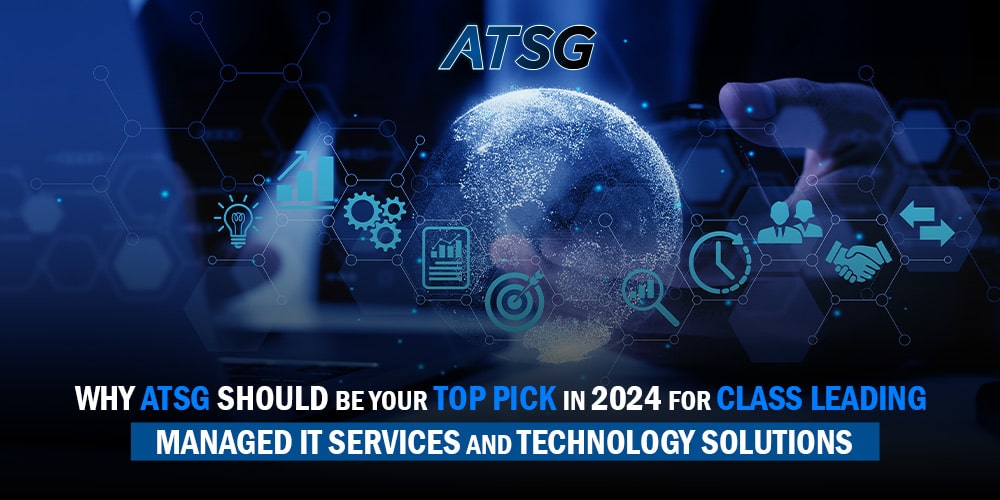
At times, this also creates internal and operational challenges, as the solution of any one service provider may not seamlessly integrate with the organization’s legacy infrastructure, or some other solution provider’s offering. This can escalate into a huge “technology mess” in no time, and in some cases, the inherent value of a solution tends to diminish.
This is where the role of a global Managed IT Services and Technology solutions provider like ATSG really comes in. With two plus decades of industry experience under its belt, one of the largest in-house teams of highly experienced and certified professionals, and a very well diversified Service Offerings Portfolio, ATSG has become a force to reckon with in the global tech landscape.
The highly diversified portfolio of ATSG spans across cutting edge Digital Workplace, Cybersecurity, Digital Infrastructure and Customer Experience Management solutions. At ATSG, we offer full-stack technology solutions and services under one roof, delivering un-rivaled peace of mind to our valuable client enterprises.
So, whether you want consultancy, implementation or complete management of technology solutions for your enterprise, ATSG has got you fully covered. One of the key differentiators of ATSG in the global Managed IT Services and Technology Solutions space is our un-matched level of customizability that we offer to our valuable client enterprises.
Instead of offering “one size fits all” Managed IT Services and Technology solutions, ATSG believes in understanding and contemplating the precise solution(s) a client enterprise is seeking, and then delivering that custom built solution to the valuable client enterprise.
ATSG’s involvement is not limited to just designing the solution, as we also offer highly professional monitoring services for the delivered or already deployed technology solution(s). That is not all, ATSG also offers industry leading capabilities in fully managing the solution, and also optimizing its performance further, so you can extract maximum value from the solution.
As the year 2023 draws to an end, business and IT leaders are busy preparing their “IT balance sheets”, summing up the new technologies that they adopted, and also a few legacy technologies they may have let go of. This is also a very crucial time for planning and budgeting for the upcoming year 2024, and how to leverage innovative digital technologies for positive business outcomes, and carving a unique competitive edge in the market.
This post is more of a technology round-up for the year 2023, in which we discuss the future prospects of various IT solutions and technologies. We will also discuss how these technologies will impact organizations, in the year 2024 and beyond.
Desktop as a Service (DaaS) – The Path to an Agile and Scalable IT Infrastructure
Today’s dynamic business and IT environment requires agility and flexibility, enabling enterprises to scale up or down, as per shifting market trends. The other challenge enterprises continue to face is giving their remote and hybrid employees seamless access to enterprise data and applications, without compromising on privacy or security.
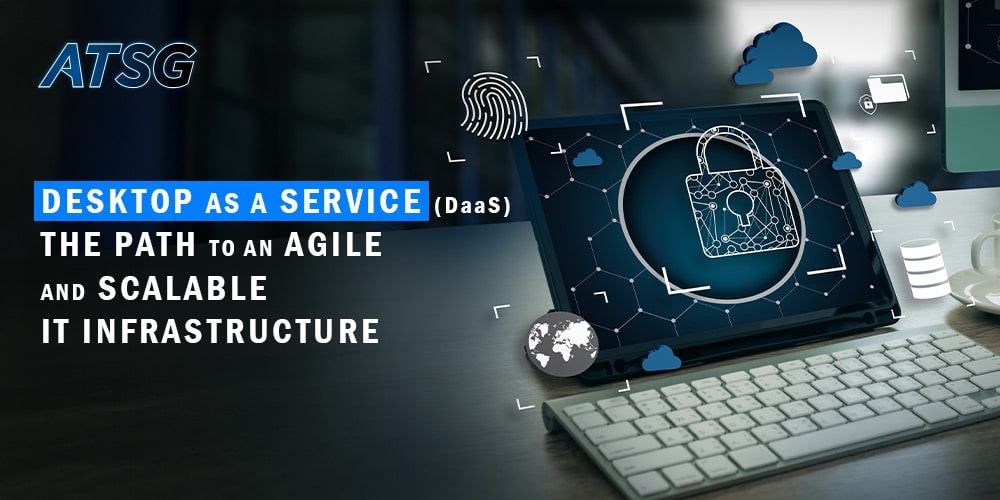
This is where the role of a versatile enterprise productivity solution like Desktop as a Service (DaaS) comes in. As the name suggests, DaaS is a fully virtualized desktop environment, which is accessible to employees over the internet.
DaaS is also referred to as a Cloud Hosted Virtual Desktop, or Cloud Desktop. Like your physical PC, your cloud desktop will also have resources such as storage, CPU, GPU and memory. The only difference is that a cloud desktop is hosted within the centralized and highly secure data centers of a Cloud Service Provider (CSP).
Cloud Desktops are really easy to deploy or provision, as the process takes just a few clicks. Similarly, your IT team can also de-provision these cloud desktops on the fly, if the demand for computing resources slows down, or any of your employees leaves the organization.
ATSG is a leading global provider of cutting edge DaaS Solutions, which offer a fully virtualized Microsoft Windows desktop environment to your employees. Our cloud desktops can also be equipped with specialized productivity applications for maximum efficiency.
The best part is, you can manage this entire DaaS Environment through our highly intuitive ATSGOne Cloud Manager portal. This holistic portal lets your IT team manage all aspects of the DaaS environment from a single interface, whether its Virtual Machine (VM) provisioning, Operating System (OS) management, application deployment, usage metrics, user management, and much more.
As a testament to our cutting edge cloud desktop solutions and unique capabilities, ATSG was recognized as a Challenger in the inaugural 2023 Gartner® Magic Quadrant™ for Desktop as a Service (DaaS). We believe this achievement reflects on our un-wavering commitment to constant innovation and process improvement.
To learn more about ATSG’s cutting edge DaaS solutions, and the factors that make it such a great enterprise productivity solution, click here…
Understanding the Differences between a Cloud Service Provider (CSP) and Managed Service Provider (MSP)
Today, we live in a highly services oriented world. As a consumer, we have become very accustomed to availing a wide range of services, both for personal and professional reasons. The same holds true for organizations, regardless of their size or the industry in which they operate.
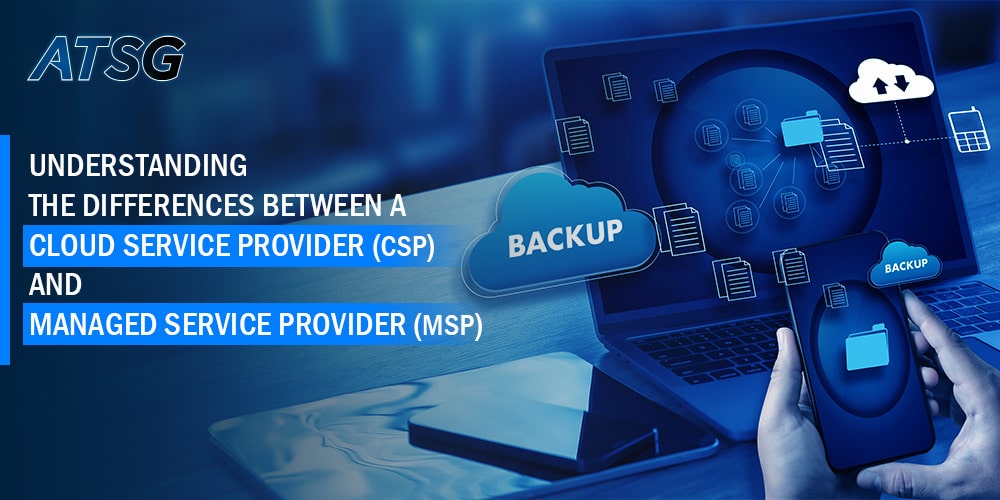
Each organization is not good at everything, and because of this, it needs specialized service providers to outsource some of its tasks, processes or workloads etc. The other reason why service providers tend to excel these days is the level of expertise and acumen that they have gained over time, making them specialists of their domain.
So, instead of going through the laborious cycle of failing and learning, and then gradually improving in-house processes, most organizations make the prudent choice of engaging the expertise of a service provider instead.
The question that arises here is that what do service providers gain out of all this? Well, service providers bill their client individuals and enterprises for the nature of service they provide, and this is mostly directly proportional to the scale or extent of service that is being provided.
Having covered the concept of services and service providers in general, let us briefly discuss the differences between a Managed Service Provider (MSP), and a Cloud Service Provider (CSP).
Cloud Service Provider (CSP)
As the name suggests, a CSP offers cloud infrastructure to its enterprise customers, which could either be in the form of IT infrastructure, software, or a development environment. A CSP may also offer a combination of the above capabilities, delivered over the Cloud.
A CSP delivers these capabilities on the back of a highly advanced and powerful data center. The service is delivered by the CSP, to the client enterprise, via the internet. All the underlying hardware and environment for the service is the responsibility of the CSP, which charges a fee to the client / user enterprise.
Managed Service Provider (MSP)
The main difference between an MSP and a CSP, which we need to understand is that the scope of a Managed Service Provider (MSP) is much broader as compared to a CSP. To put it in another way, an MSP can offer a wide range of IT services and solutions, such as the network, hardware infrastructure management, data center operations, telephony, cybersecurity, and much more.
If we closely compare CSPs from MSPs, the services being offered by a CSP are limited only to Cloud Computing solutions. The scope of what an MSP can offer is much wider, and includes the entire IT domain as a whole, covering multiple facets.
Regardless of whether an enterprise leverages a CSP or an MSP, the idea is to outsource some elements of IT management to subject matter experts, and channelize the saved time and efforts towards more value generating initiatives.
How to Differentiate between Cloud Security and Cybersecurity?
The importance of IT services and solutions has increased manifolds. This has also drastically increased the importance of Cybersecurity. Due to the proliferation of remote and hybrid work structures, the rate of Cloud adoption has increased exponentially.
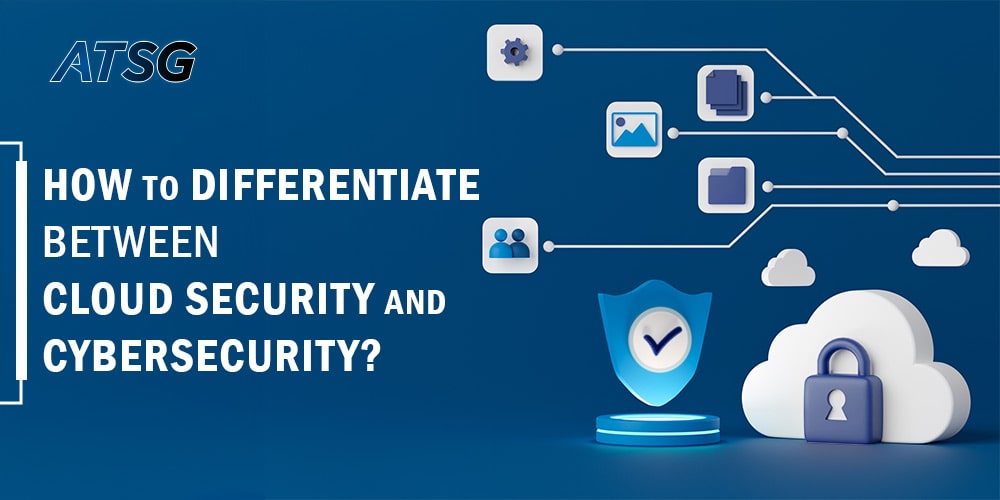
More enterprises than ever are on the lookout for state of the art Cloud Computing solutions and services for their storage, compute and networking needs. Let us try to break down the differences between Cloud Security and Cybersecurity.
What is Cloud Security?
As the name suggests, Cloud Security is concerned mainly with the security of the cloud infrastructure itself. Its scope is limited as compared to Cybersecurity, which encompasses the entire IT infrastructure of an enterprise.
Depending on the nature of cloud service, the scope of Cloud Security would also vary. However, it normally includes security of the cloud data center, firewalls, a client’s enterprise data hosted in the cloud, any deployed apps, and more.
It is pertinent to mention here that Cloud security is governed by a Shared Responsibility model, whereby some aspects of the cloud environment are managed by the CSP, while rest are taken care of by the client enterprise.
What is Cybersecurity?
Present day complex cyber threats have turned Cybersecurity into a central capability for any enterprise that has interface with the internet. Unlike cloud security, which is limited just to the cloud infrastructure, the scope of cybersecurity extends to the entire IT infrastructure, and at times, even beyond that as well.
Cybersecurity encompasses the enterprise network, devices, data centers, servers, software, applications, and more. To manage and secure such a diverse set of components, leading cybersecurity solutions adopt a multi-faceted approach.
In addition to this, world class cybersecurity solutions are not just capable of detecting cyber threats, but can also proactively respond to these threats in real-time. To meet present day’s stringent regulatory compliance, and retain customer trust, it is vital for enterprises to have robust cybersecurity measures in place.
SQL Standard v/s SQL Enterprise – An Objective Comparison
The day to day operations of enterprises are increasingly moving online. This is particularly true when it comes to offering various online services to different customers globally. Having an effective digital presence really helps a company generate recurring revenue, and serve customers even during disruptive times, such as a pandemic or any other natural disaster.
However, the online part of a business that a customer sees and interacts with, is just the front-end. The actual “magic” happens in the background, which is made possible mainly through effective database management.
Take the example of an online store, which may have hundreds or thousands of products in its virtual inventory. Now, when a customer visits the store’s website, such a customer would be interested in just one, or a handful of products at best.
So, it is actually the database management system (DBMS) at the back-end, which does all the working and correlation, to show the most relevant product or service to each individual customer. SQL Server has traditionally been the most effective solution globally, for setting up and managing databases.
What is SQL Standard?
As the name suggests, this is the entry level database management system that is on offer. All the essential elements of any DBMS are incorporated within SQL Standard, which include data management, reporting and analytics. This variant of SQL also offers decent availability, and Disaster Recovery (DR) capabilities.
However, an area where SQL standard tends to lag behind, is its ability to support highly time-sensitive, or mission critical workloads and processes. Despite its limitations, SQL standard is suitable for most entry level operations and processes, and can also deliver valuable insights to further streamline the back-end.
SQL Enterprise – Enhanced Features and Functionality
As the name suggests, SQL Enterprise is the more powerful variant of SQL Standard. In addition to possessing all the features of SQL Standard, the enterprise version of SQL comes with additional functionalities and capabilities, including but not limited to rapid scalability, and highly optimized performance.
To learn more about SQL Standard and SQL Enterprise, you can read this article which draws a more in-depth comparison between the two database management solutions:
The Pivotal Role of Managed Service Providers (MSPs) in Organizational Success
We now live in a hyper competitive world, where organizations are under constant pressure to not only innovative, but also optimize existing business processes. Technology is getting complex with every passing day, but in order to gain and retain a competitive edge, enterprises need to leverage it across their operational domain.
Every organization can’t develop expertise for each and every facet of its technology stack. Let’s consider the example of a financial services company. It may have some of the best financial analysts and advisors, but they will most likely not be in a position to secure the company’s sensitive data from cyber threats.
This is exactly where the role of Managed Service Providers (MSPs) takes center stage. MSPs are organizations that develop and nurture expertise in very specific domains of technology. Some common examples of managed services include the enterprise network, cybersecurity, customer relationship management (CRM), and so on.
The Pivotal Role of MSPs in Organizational Success
Due to their expertise, MSPs become highly specialized in the services they either provide, or manage for their client enterprises. Take the example of the enterprise network, which serves as the lifeblood of an organization.
This single domain of just network management involves network design, monitoring, device mapping, protection, optimization, problem identification and remediation, incident response, and so on.
Given the complex nature of today’s IT services and infrastructures, it would be a daunting challenge for any organization to develop such diverse capabilities in-house. Instead, such an enterprise can engage the services of an MSP, and avail all these services at a fraction of the cost of developing this capacity in-house.
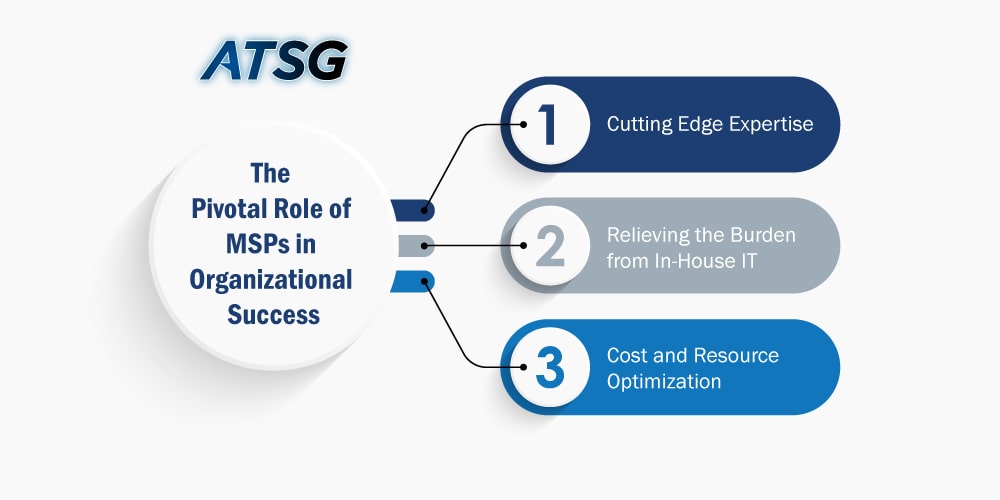
Let us briefly discuss the role of Managed Service Providers (MSPs) in organizational success:
Cutting Edge Expertise
Leading MSPs invest a lot of funds and resources in gaining the latest expertise, and keeping their managed services abreast with the latest technology trends. So, naturally, client organizations of MSPs get access to cutting edge industry expertise, boosting their efficiency and operational capabilities.
Relieving the Burden from In-House IT
In most cases, the in-house IT teams of enterprises are so busy in providing in-bound support, installing updates or patches, and “firefighting” issues elsewhere; that they are left with no bandwidth to innovate or think out of the box. Once these day to day management affairs are outsourced to an MSP, your in-house IT team can focus more on new initiatives.
Cost and Resource Optimization
An enterprise would have to expend a lot of resources and time to develop specialized IT management capabilities in-house. Even after this stage, talent retention and further skill development still remain an on-going challenge. By engaging the expertise of an MSP, a client enterprise can achieve both cost and IT resource optimization, delivering a wide range of benefits.
With the dawn of the year 2024, innovative digital technologies like Cloud Computing will continue to re-define enterprise operations. It is vital for organizations to embrace the latest digital technologies with an open mindset, and fully leverage the flexibility, agility and scalability that they deliver.
Contact ATSG for best in class Managed IT Services, Cybersecurity, Technology and Cloud Computing solutions for your enterprise. Our innovative offerings span across Digital Workplace, Customer Experience Management, Digital Infrastructure and Cybersecurity solutions for enterprise clients globally.




